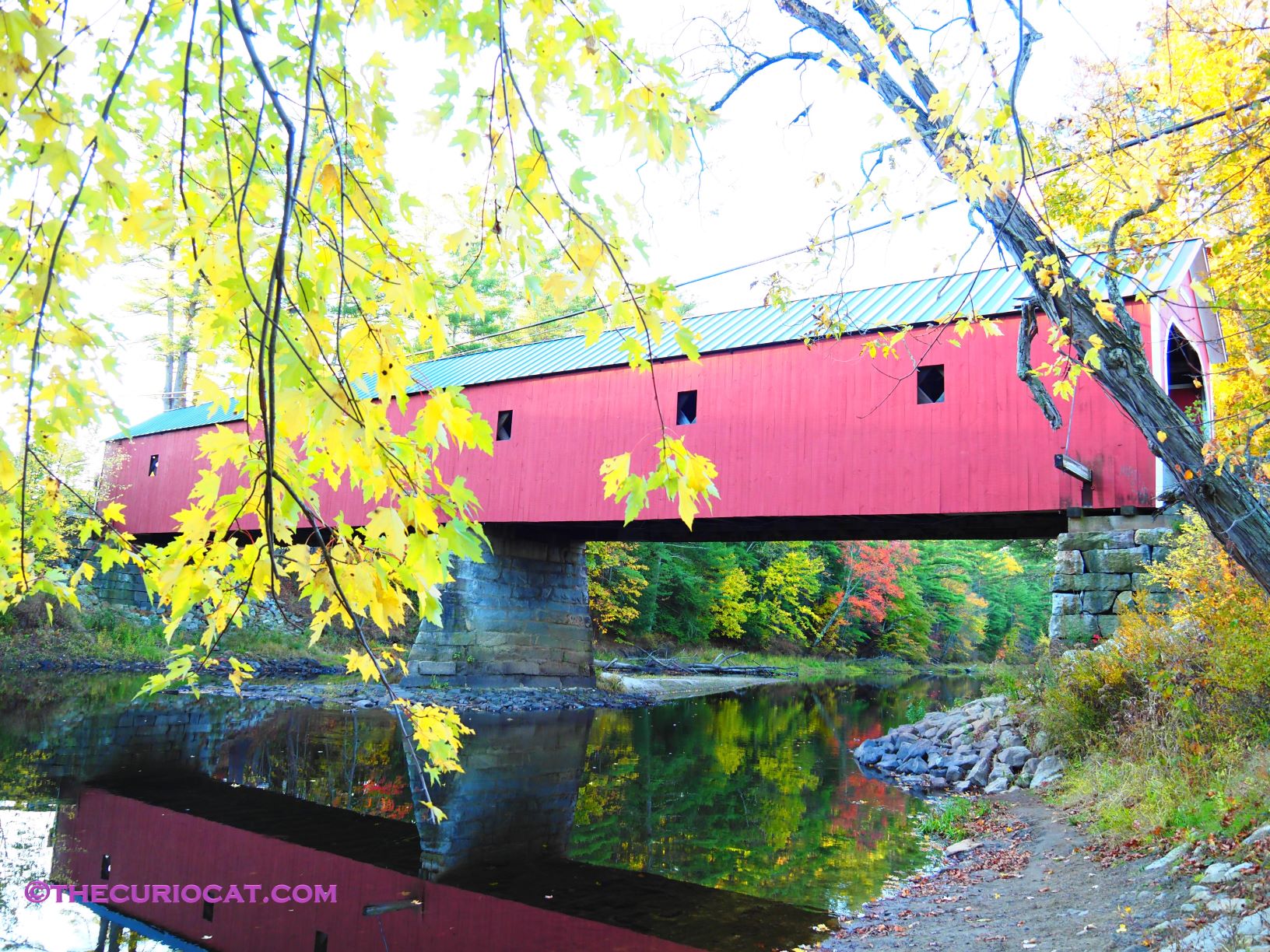Anyone visiting New England is bound to come across some covered bridges. I had the incredible opportunity to explore, in detail, around ten of them during a trip last year. And it became one of the main highlights of my expedition! As it happens, I experienced something very unexpected. The diversity of engineering methods used across the bridges surprised and fascinated me! I discovered over 20 different “truss” types. The stark contrast from bridge to bridge, as well as the patterns consistent within each truss type made the adventure fun like a puzzle!
The Queenpost Truss – The Simplest of the Three

A Queenpost truss is the second simplest of all the truss examples I discovered (the simplest being a Kingpost truss). Due to the simplicity of the construction, these covered bridges tend to be quite small and cover shorter distances. Consequently, I found only one example of a Queenpost truss bridge: The Carlton Covered Bridge in East Swanzey, New Hampshire. The current bridge was built in 1869, but it’s believed a bridge existed on that site consistently since 1789.
The Paddleford Truss – Embroiled in Controversy!

Millwright and builder Peter Paddleford created this design in the 19th century. But, due to the surrounding controversy, he could not obtain the patent! Sadly, this unfortunate man was accused of copying his design from another truss type, the Long truss which was patented by Stephen Long in 1830. Certainly, they do seem very similar at a passing glance, but there are some definite differences as you can see in the comparison illustrations below.
As a result of the legal battles, the design wasn’t as widely used as others. Hence, I only found two examples of the Paddleford truss on my expedition: The Albany Covered Bridge in Albany, New Hampshire and the Lovejoy Covered Bridge in Andover, Maine.

Albany Covered Bridge 
Lovejoy Covered Bridge
Built in 1858, The Albany Covered Bridge has some added arches inside which make it almost look like a Burr Arch truss!
Built in 1868, The Lovejoy Covered Bridge is Maine’s shortest.
The Town Lattice Truss – Beautiful and Strong!

Owing to the great success of the design, the Town Lattice truss is, by far, the most ubiquitous. And, in my opinion, the most beautiful! Due to the significantly more efficient load distribution, builders were able to use cheaper and lighter types of wood. Therefore, bridges became much lighter and considerably less expensive to build! Patented in 1820 by renowned architect and engineer Ithiel Town, the design gained him much notoriety in architectural circles. Later, he would go on to form one of the first architectural firms in the United States! This design was used by all the rest of the bridges I saw, so I am sharing only two of my favorites with you: The Thompson Covered Bridge in West Swanzey, New Hampshire and the Ashuelot Covered Bridge in Winchester, New Hampshire.

Thompson Covered Bridge 
Ashuelot Covered Bridge
Built in 1832, much needed reconstruction occurred in 1993. Prior to this, school busses needed to empty of kids before crossing!
I’ve saved the best for last! My absolute favorite was the Ashuelot Covered Bridge! It’s considered to be one of New Hampshire’s most elaborate. Built in 1864, the Ashuelot Railroad originally used it to carry wood across the river.
To learn more about the author, Hannah, click here!














